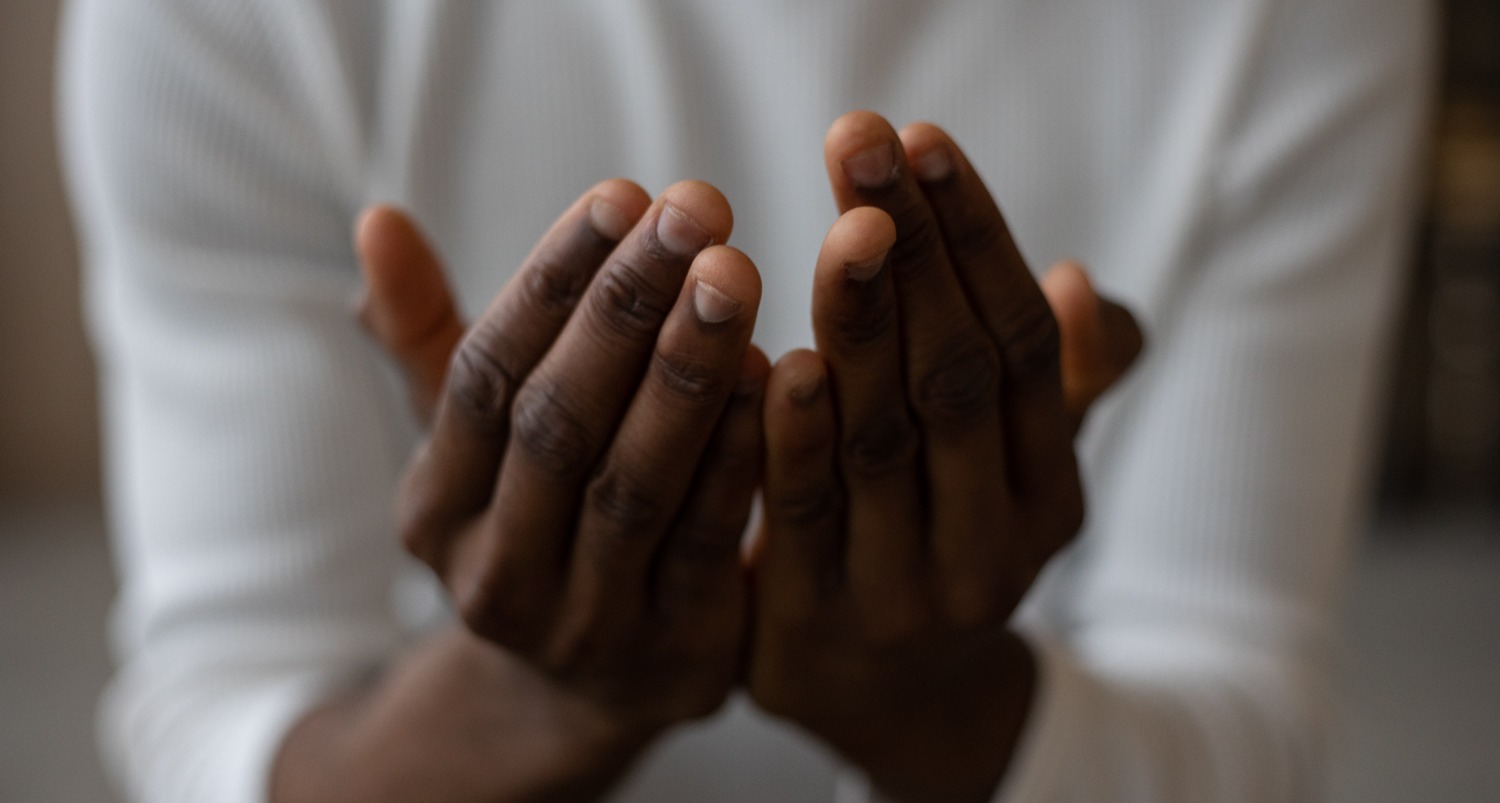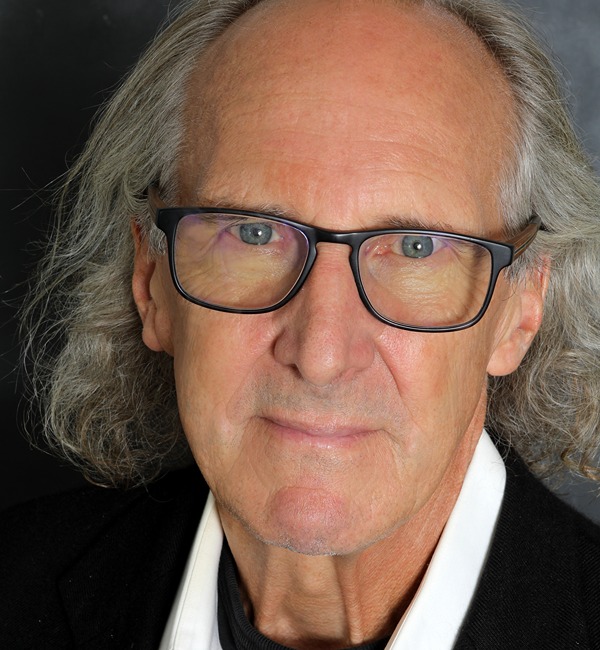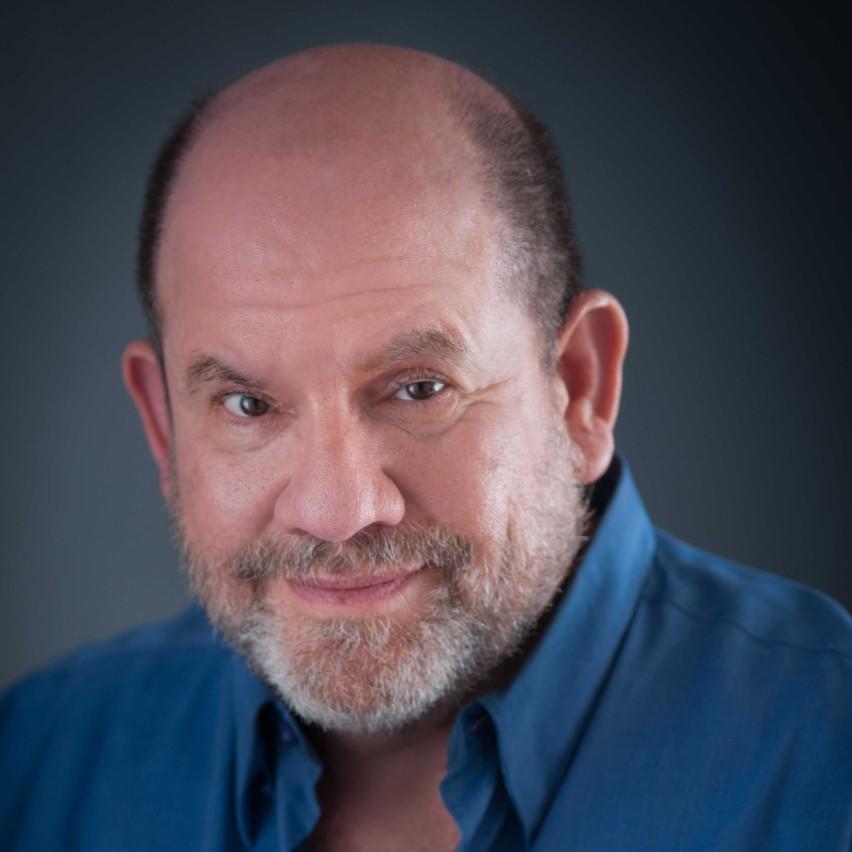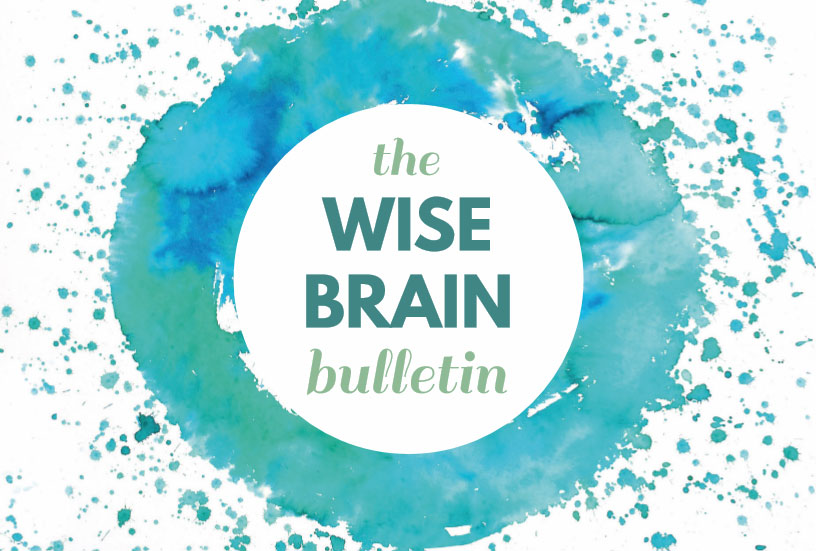News and Tools for
Happiness, Love, and Wisdom
Volume 17,5 • October 2023
In This Issue
Greetings
The Wise Brain Bulletin offers skillful means from brain science and contemplative practice – to nurture your brain for the benefit of yourself and everyone you touch. The Bulletin is offered freely, and you are welcome to share it with others. Past issues are posted at https://www.wisebrain.org/tools/wise-brain-bulletin.
Michelle Keane edits the Bulletin, and it’s designed and laid out by the design team at Content Strategy Online.
To subscribe, go to https://www.wisebrain.org/tools/wise-brain-bulletin.
The Magic and Power of Core Wisdom
© 2023 Ritu Bhasin
Adapted from Chapter Eight of We’ve Got This by Ritu Bhasin.
Because we literally carry hurt in our bodies, our healing work is vital. This is exactly why we want to develop our core wisdom—the knowing that lives inside us that leads us to track and settle the sensations, feelings, and thoughts we’re holding, and to understand intimately what our body and mind are signaling. Our core wisdom knows we must be both embodied—focused on our body—and intentional—focused on our mind—so that our healing journey is holistic and balanced. In targeting both the body and mind, core wisdom is what mindfulness is all about—gaining awareness of what we’re sensing, feeling, and thinking within us in any given moment, and doing this in a non-judgmental way.
BREAKING DOWN THE HEALING POWER OF CORE WISDOM
Core wisdom is the knowing you hold within that guides you to tune in to your body and mind, understand what they’re telling you, and do what feels healthy to release and settle your hurt. It’s what helps you to recognize that you’re experiencing belonging and to create more of these moments.
Your core wisdom pushes you to clock and name sensations inside your body— like if there’s a buzzing in your upper chest, a tingling at the back of your neck, a throbbing in your jawline, a burning between your left foot and knee, or numbness throughout your body. In building your core wisdom, you become more and more comfortable using words like warmth, expansion, chills, fuzziness, heaviness, heat, and tightness, to describe what you’re sensing. And you’re able to identify the feelings coming up within you, like being centered, grateful, excited, hopeful, or tender; angry, disconnected, frustrated, heartbroken, or sad; and bored, fragile, scared, or worried.

Your core wisdom enables you to let go of energy and negativity you’re holding by automatically calming your body through movements that help to discharge stress—like trembling, twitching, shaking, and crying. It empowers you to become more aware of the connection between your body and the environment you’re in, including how you’re reacting to the people and the stimuli that are around you. In growing your core wisdom, you’ll notice beautiful changes in your body—like your back is less tense, the knots in your neck are lessening, your digestive issues are slowing down, your sleep is more restful, you’re taking deeper breaths, and you’re feeling joy and lightness inside you. You’ll pause more often in moments when you’re feeling belonging to soak in the warmth. You’ll find when sensations come up, you’re less likely to override them. For example, when you feel the weight of tears starting to form in your eyes, you’ll just start to cry instead of holding back. You may even hear The Voice say Don’t cry. But you’ll just go ahead and do it anyway or you may say something back like, “I’ve got this,” and then let your body release whatever comes up—which, in the end, will feel so good because you’ve released energy that wanted to leave you. Core wisdom is the knowing you hold within that guides you to tune in to your body and mind, understand what they’re telling you, and do what feels healthy to release and settle your hurt. When it comes to your mind, your core wisdom can help you to pause more and quiet your internal noise, so that you’re better able to catch the mean things you say to yourself about yourself. It can drive you to rewire your brain by replacing harmful messages with more positive and loving beliefs about who you are and your greatness. It can lead you to interrupt the looping in your mind about negative experiences. And it can encourage you to abandon your Performing Self mask and positivity-perfection-achievement (PPA) armor so you live more authentically.
In cultivating core wisdom, you’ll notice amazing changes in your mind as well—like you’re uncovering more of your negative self-talk. And you’re more focused on unlearning and rebuilding the messaging that swirls in your head. And maybe you’ll clock that you’re using more of a growth mindset. Or you’re now anchored to the belief you can heal, thrive, and soar. Or you feel safer to be who you really are. And when all of this happens, you’ll notice your mind is filled with loving thoughts about how beautiful it feels to belong.
Between your body and your mind, you can use your core wisdom to feel more worthy and whole, be more connected to who you are, become more positive overall, feel more bonded to your beloveds, believe in your self-worth and abilities, showcase your excellence and creativity, and stand in your power—all of which is part of your journey to experience heightened belonging. In sharing all this with you, I’m highlighting why we want to use our core wisdom as a guide for everything we do. Its healing power and magic can transform any experience we have on our path to belonging.
YOUR TREASURE CHEST OF CORE WISDOM PRACTICES
 When I was in my twenties and early thirties, if you’d asked me if I understood the magic of core wisdom, without skipping a beat I would have blurted out something like, “Well, of course I do.” But I now know I was barely scratching the surface. From my Performing Self mask and my PPA armor to my body tension, back pain, gut health, sleep patterns, anxiety levels, negative self-talk, and energetic flow, I didn’t get the full extent of it.
When I was in my twenties and early thirties, if you’d asked me if I understood the magic of core wisdom, without skipping a beat I would have blurted out something like, “Well, of course I do.” But I now know I was barely scratching the surface. From my Performing Self mask and my PPA armor to my body tension, back pain, gut health, sleep patterns, anxiety levels, negative self-talk, and energetic flow, I didn’t get the full extent of it.
Even during my early years of doing yoga and mindfulness, I still wasn’t focusing on using my core wisdom to tell me what I needed or wanted. For example, when I walked into a room or I met someone for the first time, I might have heard things in my head like “I don’t trust this person” or “this doesn’t feel right,” but I’d often push those thoughts down because I thought I was being overcritical. It wasn’t until I started to constantly track and name sensations and feelings in my body—like noticing a tightness in my chest instead of a warm tingling while chatting with someone I didn’t know well—that my core wisdom truly kicked in.
And now that it has, it’s rocked my world.
Given how powerful core wisdom is, you may be wondering how you can grow more of it. Here’s the secret to making this happen: We develop our core wisdom by using healing practices like the ancient and ancestral traditions I named in the last chapter combined with the body- and mind-based strategies I’ve been sharing in this chapter. Specifically, I’m talking about adding strategies like the ones in this list to your healing treasure chest:
- Breathwork techniques like belly breathing, Kapalabhati, Nadi Shodhana, and anything else that prompts you to be more intentional about how you’re breathing, so that you can calm and regulate your body and mind
- Movement-focused rituals like yoga, tai chi, qigong, capoeira, dancing (especially when it’s to drums), and anything else that moves your body in such a way that you’re combining breathwork with discharging emotions and energy to settle your system
- Vibration-based experiences like chanting, ululating, singing, toning, humming, and anything else that causes a pulsation inside you to help stir up and let go of sensations and emotions
- Touch-centric activities like massage, acupuncture, cuddling with your beloveds, using heat, and anything else that releases tension, is soothing, and signals to your body that it’s safe and supported
- Body-awareness routines like the breathwork, movement-focused, vibration-based, and touch-centric practices I mentioned above, but also body scans and anything else that helps you to sense and name what you’re holding inside you
- Mindfulness moments like meditating, journaling, therapy, self-reflection exercises, talk circles, taking a pause, and anything else that quiets the noise in your mind so that you can feel more present, interrupt negative narratives, manage your thoughts, clock when belonging is happening, and rewire your brain
- Holistic health habits like eating tons of veggies, avoiding sugar, drinking truckloads of water, minimizing intoxicants, getting lots of sleep, exercising regularly, making love, having fun, and anything else that brings you into balance
In looking at this list, I’m struck by how healing practices and core wisdom go hand in hand. The more we leverage healing practices, the more we grow our core wisdom. And the more we grow our core wisdom, the more we’re drawn to using healing practices.
It’s a beautiful cycle of soul work that reminds us about what we need and what’s best for us. The chemistry between our healing practices and core wisdom pushes us to focus on belly breathing. It inspires us to use movement to release energy but knows there’s a difference between using our body for activity and going within to settle ourselves. It leads us to dance to drumming rhythms like no one is watching. It guides us to hum, chant, sing, and ululate loudly. It steers us to be in nature with trees, plants, mountains, water, and animals. It moves us to color, paint, draw, sculpt, sing, dance, drum, write, and knit. It encourages us to work with a therapist or body worker when we need an expert to help us.
Healing practices and core wisdom go hand in hand. The more we leverage healing practices, the more we grow our core wisdom. And the more we grow our core wisdom, the more we’re drawn to using healing practices. All of these practices become part of our rewarding work to heal along the beautiful and hard path to experiencing belonging. Our core wisdom knows that we need a mix of practices to heal—that one approach alone for the rest of our lives won’t be enough and, since many of them are connected, we’re more likely to have a greater impact on our healing experiences when we use several of them. It also knows that healing is a marathon, not a sprint. But wherever we start, it doesn’t need to be perfect; it just needs to be our best in the moment. As we heal and grow, we may realize that our old best isn’t enough anymore. When that happens, we move the dial. We keep ramping up and moving on.
ABOUT THE AUTHOR
 Ritu Bhasin is a Belonging and Leadership expert, and bestselling author of We've Got This: Unlocking the Beauty of Belonging. Ritu is the CEO and founder of bhasin consulting inc, a global diversity, equity and inclusion (DEI) consulting firm founded in 2010 that has worked with hundreds of world-renowned organizations. She has been a professional speaker for almost 15 years and has presented to 100,000s+ people globally across thousands of sessions. She’s known for delivering highly inspiring, engaging, practical, and data-driven keynotes across a range of DEI areas, including: inclusive leadership, allyship, authenticity and belonging, and empowerment.
Ritu Bhasin is a Belonging and Leadership expert, and bestselling author of We've Got This: Unlocking the Beauty of Belonging. Ritu is the CEO and founder of bhasin consulting inc, a global diversity, equity and inclusion (DEI) consulting firm founded in 2010 that has worked with hundreds of world-renowned organizations. She has been a professional speaker for almost 15 years and has presented to 100,000s+ people globally across thousands of sessions. She’s known for delivering highly inspiring, engaging, practical, and data-driven keynotes across a range of DEI areas, including: inclusive leadership, allyship, authenticity and belonging, and empowerment.
Wise Effort: The Science and Practice of Putting Your Energy Where it Matters Most
© 2023 Diana Hill, PhD
I'm 44-years old and I’m still running. On workday mornings, I jog along a windy road overlooking the coast of Santa Barbara, and on weekends I’ll run down a mountain bike trail trying to keep up with my teenage son.
My running has changed a lot over the years. I remember being eight and running along the creek path behind our house in search of Eucalyptus pods to use as little hats in my fairy house. In high school I ran cross-country with my best friend, keeping a moderate pace so we could prioritize chatting about our day.
But there was also a time in my life when running became rigid, depleting, and rule-governed. I would hop on a treadmill at 5 am and set the level to 10, because my mind told me I had to. Or, I would run with an injured knee, to experientially avoid the guilt of taking time off.
Many therapists told me in my recovery from disordered eating that I should “just stop running.” Take up swimming. Water aerobics! Yoga? But what about my 8-year-old self that loves to run in nature? Or my adult self that craves the solitude, time to talk with friends, and stress relief that running provides? Do I have to give her up too?
You may not be a runner, but you may relate to having an ambivalent relationship with drive. There’s a slippery slope between loving your work and workaholism, engaged parenting and helicopter parenting, loving running and running yourself into the ground.
The Paradox of Striving
When you take a closer look at striving, you may start to see that it’s not all good or bad. It’s a paradox.
If you are a leader at work, an accomplished musician, or head of the Parent Association, people may admire your determined effort. Your tenacity, stamina and ability to get stuff done has served you well. But there’s a cost when you lack equanimity and your effort leads you to isolate, compartmentalize, become self-focused, or miss out on the big picture. For example:
- Pushing yourself harder under stress can negatively impact your physical health
- Ambition at work can be lonely when you compete with your colleagues
- Striving can backfire in relationships when you set high expectations for people you love
- Hustling to get ahead can reinforce disparities and inequities

In their book Both/And Thinking, Wendy Smith and Maryanne Lewis define a paradox as “contradictory yet interdependent elements that exist simultaneously and persist over time.” Living with contradictions is uncomfortable. We want to be high achievers at work but also appreciate our downtime. We crave learning and growth but also seek being ok with things as they are. We want to plan for the future, but also enjoy the present.

When faced with a paradox, we often feel like we have to choose. Research in psychology has repeatedly shown this tendency is especially dominant when we’re under stress. Strivers might find themselves teeter-tottering from straight As to withdrawing altogether, from following their perfect eating plan to saying “F--- it” and eating the whole box of cookies.
Either/or thinking isn’t the best way to resolve a paradox. Instead of having to choose between aiming high or missing out, you can start recognizing the deeper questions that underlie the paradox of striving. How can you creatively explore and hold both simultaneously: persistence and letting go, effort and surrender, being alert and at ease? This is Wise Effort.
Wise Effort
The term “Wise Effort” comes from The Eightfold Path of Buddhism, along with wise intention, wise view, wise speech, wise livelihood, wise action, wise mindfulness, and wise concentration. Wise effort is described as the purposeful dedication of your energy toward what is wholesome (helpful) and abandoning what is unwholesome (unhelpful). Insight meditation teacher Gil Fronsdal described wise effort to me on the Your Life in Process Podcast in simple terms:
“If you are making it worse, stop. If you're not making it better, start making it better. And if you are making it better, keep doing it.”
Wise Effort requires us to be psychologically flexible. In Acceptance and Commitment Therapy (ACT) psychological flexibility is your ability to stay aware, open, and engaged with what you care about, even in the presence of obstacles. There are over 1,000 randomized controlled trials demonstrating that when you are more psychologically flexible, you’re more likely to stick with healthy behaviors, are a better parent, can navigate stressors more effectively, and have better mental health overall.
Joseph Ciarrochi, lead researcher in the area of ACT, defined psychological flexibility in the Wise Effort Together Summit as:
- Connecting with the present moment
- Persisting at the things you care about
- Being able to change and adapt as challenges arise
While these aren’t always easy to practice, it’s clear that when we do engage in any of these ways of being, even momentarily, life seems to shift for the better. With psychological flexibility you engage in the Wise Effort of putting your energy toward what matters most.
Getting Curious
One way to explore Wise Effort is to get curious about how you are applying your effort currently, and whether it aligns with your values.
Draw out the diagram below on a sheet of paper and get curious about the following categories.

Unwise Effort:
- Burn-out: High Effort and Away From Values. Where are you putting a lot of effort that doesn’t align with your values? Are you acting in ways that are harmful to you, harmful to others, or doing it because you are following rules, “shoulds,” and expectations of others? What environments are burning you out?
- Not worth-it: Low Effort and Away From Values. What low effort activities are wasting your precious time and energy? For example, scrolling on your phone, mindless eating, watching the next Netflix show that rolls in. What are you avoiding or procrastinating by engaging in these not worth-it activities?
Wise Effort:
- Worth-it: High Effort and Toward Values. What do you care most about? What’s worth putting effort into? What’s of most benefit to your well-being and the well-being of others?
- Savor-it: Low Effort and Toward Values. What nourishes you and refuels your energy? Where do you want to be more present? What do you want to savor with others?
With greater awareness of your effort and values, you can begin to uncover what a meaningful life means to you and take steps toward your values, while surrendering to the process. With Wise Effort you can uncover your inherent compassionate heart and use it to guide your life force in the world.
When you are engaged with meaningful pursuits, Wise Effort refuels your energy so that you don’t become depleted. And when you take time to savor the good that is already here, you can keep running, enjoying the view along the way.
ABOUT THE AUTHOR
 Diana Hill, PhD is a clinical psychologist, international trainer, and sought-out speaker on Acceptance and Commitment Therapy (ACT) and compassion. Diana hosts the upcoming Wise Effort Together Summit and Your Life in Process podcast and is the author of ACT Daily Journal and The Self-Compassion Daily Journal (to be released March 2024). Diana works with organizations and individuals to develop psychological flexibility so that they can take wise action toward fulfilling and impactful lives. Integrating her over 20 years of meditation experience with yoga and psychological training, Diana is on the board for the Institute for Better Health, blogs for Psychology Today and Mindful.org, and guest teaches at InsightLA, Blue Spirit Costa Rica, PESI, Praxis Continuing Education, Yoga Soup, and Insight Timer Meditation. Diana practices what she preaches in her daily life as a mom of two boys and bee guardian. Go to drdianahill.com or her channels on Instagram, Facebook, Twitter, YouTube (@drdianahill) to learn more.
Diana Hill, PhD is a clinical psychologist, international trainer, and sought-out speaker on Acceptance and Commitment Therapy (ACT) and compassion. Diana hosts the upcoming Wise Effort Together Summit and Your Life in Process podcast and is the author of ACT Daily Journal and The Self-Compassion Daily Journal (to be released March 2024). Diana works with organizations and individuals to develop psychological flexibility so that they can take wise action toward fulfilling and impactful lives. Integrating her over 20 years of meditation experience with yoga and psychological training, Diana is on the board for the Institute for Better Health, blogs for Psychology Today and Mindful.org, and guest teaches at InsightLA, Blue Spirit Costa Rica, PESI, Praxis Continuing Education, Yoga Soup, and Insight Timer Meditation. Diana practices what she preaches in her daily life as a mom of two boys and bee guardian. Go to drdianahill.com or her channels on Instagram, Facebook, Twitter, YouTube (@drdianahill) to learn more.
What Helped Me Recover from Childhood Trauma
© 2023 Frank Rogers Jr., PhD
Adapted from Cradled in the Arms of Compassion: A Spiritual Journey from Trauma to Recovery © 2023 by Frank Rogers, PhD. Reprinted with permission from Lake Drive Books. All rights reserved.
Author’s Note: “You were like this once. What did you do to get better?” A day after leaving a mental institution, my sister, devastated by flashbacks from childhood sexual abuse, posed this question to me. Within a few weeks, she took her own life. I wrote a book to provide her with the answer I wish I could have offered then. The following excerpt from that book is the afterword that synthesizes much of what I learned along the way.
It is a sober truth—healing from sexual abuse is an odyssey, a long and wandering journey with many upheavals along the way. Each person’s voyage to a Promised Land of emotional stability, sustained freedom from the triggers of trauma, and a life lived with contentment, connection, and purpose is utterly distinctive. The winds that whip then dissipate into a dead-sea calm, the storms that strand us in desolate shores, the routes that we navigate, and the ports of call that replenish us are as unique for each survivor as the circumstances surrounding the horrors from which we are recovering.
For all of the idiosyncrasies, however, several things are true for each voyage. The journey is lengthy—spanning across years if not a decade or two. The journey circles and spirals, stalls and speeds up, gains ground and regresses, ever defying any linear progression. And the journey is hard—it demands resilience, determination, confidence, and courage. It is truly a hero’s and shero’s epic quest.

To adequately delineate all that I have learned about recovering from sexual abuse, I needed to tell the entire story—with all of its sordidness, and all of its dead-ends and misdirections, in the midst of all of its discoveries. On this side of the telling, though, I can distill a few of the measures that helped me, over time, to get better.
Judith Herman, in her landmark book Trauma and Recovery, suggests that recovery from trauma happens in three stages—three legs in the epic journey to the homeland of healing. The first stage is Safety and Stabilization. Trauma dysregulates us. Furies, flashbacks, nightmares, and instinctive reactivities typically overwhelm the survivor and perpetuate a chronic sense that the world is unsafe. In this first stage of recovery, supports need to be put into place to sustain a season of healing, and skills need to be developed to navigate difficult emotions and regulate the body’s fight, flight, and freeze impulses.
The second stage is Remembrance and Mourning. This is the season of deep and therapeutic healing. Traumatic memories need to be processed and metabolized. The losses that one has experienced—of innocence, connection, trust, and self-worth—need to be acknowledged and grieved. And the resilient spirit of a survivor—as opposed to a passive victim—needs to be discovered and internalized.
The third stage is Reconnection and Integration. On the far end of recovery, trauma no longer defines who one is. The horrors that one has lived through are integrated as but a single chapter in one’s overall ongoing story. A life of agency and vitality can now be claimed. Meaningful relationships with others can be cultivated, work that is intrinsically fulfilling can be pursued, and a heightened meaning can be given to the trauma—perhaps by companioning other survivors, sharing one’s story and wisdom, writing about it, speaking publicly, volunteering for support organizations, or even engaging in political advocacy work. That which could have defeated someone now inspires a life well-lived.
As I look back on my journey, I recognize this threefold arc. I loosely followed its trajectory although, for me, each stage circled back multiple times and interlaced with the others. Throughout this meandering journey, I found the following coordinates most helpful in continually pointing me back in the right direction and keeping me on the course toward healing:
- Circles of Support: It was indispensable for me to find people in whom I could confide about my abuse and its tortured aftermath. Be they friends, confidants, support groups, or professionals, I needed people like my therapists and spiritual directors who would say repeatedly and unequivocally, “I believe you; something happened to you that was horrific and wrong. You are not crazy; you feel what you feel for a reason. You are not alone; others have been through this too. And yes, the way is hard, but you can get through it.”
- Setting Boundaries: I needed to suspend contact with the still living person that abused me as her presence only triggered me into a state of chronic agitation. A prolonged period of separation not only removed me from physical proximity with the external source of my activation, it reassured my inner world—the wounded ones within me and the defensive impulses that protected them—that I would keep them all safe from any further violation.
- A Season of Recovery: Mike Lew suggests that survivors leave a shingle for a spell on the door front of their lives that says, “Temporarily Closed for Repairs.” I needed to give myself a season dedicated to my recovery—both minimizing the demands on my life as much as possible and mobilizing myself with the determination that it takes for the hard work of recovery.
- Learning about Sexual Abuse: I went through a spell of devouring works depicting sexual abuse—everything from self-help books to novels, films, and documentaries. For me, this was not a masochistic wallowing. It was profoundly consoling. I was able to recognize myself in the portrayals, thus validating my experience. I learned how trauma impacts the body and soul, which normalized my own crazy-making symptoms. And with the vast number of accounts available, I felt like I was not alone—others knew the horrors of assault as well and had discovered resources for overcoming it.
- Trauma Therapy: Finding skilled counseling with people trained in working with trauma was essential for me. Trauma work is more than talk therapy. Memories need to be surfaced and shared; neural circuits of reactivity need to be rewired; physiological symptomology needs to be released. And the trauma does not need to be re-experienced—which only re-traumatizes and further entrenches protective systems—but it does need to be reimagined and metabolized. I found such therapeutic modalities as Internal Family Systems Therapy (IFS), Eye Movement Desensitization and Reprocessing Therapy (EMDR), BioSpiritual Focusing, and Jungian Active Imagination particularly suited to healing the trauma that I had endured. In explaining why such therapies are necessary for trauma recovery and summarizing the most promising among them, I find Bessel van der Kolk’s book, The Body Keeps the Score, both brilliant and definitive.
- Trusting My Body: Foundational for cultivating the stability necessary to plunge into the deep work of therapy, I needed to stop fighting my body and to learn to trust it. It was a hard-won recognition—the body does not lie. The rages, reactivities, and revulsions to touch; the instinctive stone walls of unyielding invulnerability; the sordid images that invade one’s mind both night and day—it all comes from some place. We were not born that way. Something gave rise to it. Instead of minimizing my body’s maladies, battling to subdue them, or lacerating myself in self-condemnation, it helped when I learned to listen to what my body was telling me, and to trust it to lead me to the truth of my anguish.
- Giving Expression to my Emotions: The passions and impulses that warred within me needed an outlet. Simply smoldering in their possessive energy did not help. Nor did trying to suppress them, judge them, or find a way to manage them. I needed to honor and validate them by giving them a safe space to express themselves. For me, this came through incessant journaling, drawing them with colored pencils, working them out with clay, emoting them on a stage, howling in the woods, and venting them to my therapists. The energy was seared into my cells. Giving my chaotic emotions expression discharged their intensity and dissipated the power with which they were wreaking havoc within me.
- Befriending and Restoring My Psychic States: Perhaps the single most restorative game-changer for me on my journey of recovery was the discovery that every one of our interior movements—the emotions, impulses, fantasies, and self-talk that whip through our psyches—all serve some life-promoting purpose. To be sure, in their cry to get our attention, they usually overwhelm us with their force, prompting us to try to suppress, numb, or manage these interior psychic states. My recovery took a radically restorative turn when I learned the process that came to be known as the Compassion Practice. This involved cultivating a grounded, mindful awareness of the presence of these interior states within me. It then required listening to the deep cry or need hidden within them, extending a loving care to the wounded parts of me buried underneath my reactivities, and accessing a sacred source of compassion—sometimes personified in divine figures or ancestors, sometimes experienced as a spiritual energy of care and vitality—that restored me to my best self. I engaged this process most consistently through meditation that evoked my imagination. I also discovered that this process could be engaged in other ways—writing it out in both fictive and non-fictive narratives, acting it out on stage, working it out with externalized figures drawn on a page or symbolized with objects, and talking it through with spiritual directors and confidants. The mode is multiple; the liberation, revolutionary.
Physical Activity: Frequently, my body merely needed to discharge energy. I had to move, and to move vigorously. When I was physiologically flooded and emotionally overwhelmed, I tended to power-walk through the hills or run for miles, though cycling, swimming, dancing, and yoga would all have been equally effective. Sometimes, it was necessary just to exert myself mindlessly to get away from the barrage of my inner torment. Other times, I ruminated over memories while pushing myself physically, which helped metabolize the pain without being consumed by it. And sometimes, I simply needed to tire myself out to at least approach a good night’s sleep.
- Transforming Trauma into Art: Art takes human experience and crafts it into objects of beauty. The art form can be many—composing music, painting, poetry, pottery. For me it was story—giving shape to my experience through playwriting, writing a novel, and molding accounts of abuse, my own and others, into short stories that I could share at speaking events. Whatever the form, art is more than simply sharing one’s experience. Art takes the raw material of experience, reflects upon it, and fashions it with meaning and purpose—to provoke the mind and pierce the heart. In doing so, creating art resists the passivity of despair and births life out of the death-dealing tomb of trauma. In the midst of the horror, the human spirit endures. A creative life-spark is uncovered. Power and agency are reclaimed. And the ugly is transformed into something sublime. The music may be blues; the poetry may be bleak; the sculpture may be replete with jagged edges and barbed hooks. But the truth is told, and told with emboldened vitality. In the end, I wrote a spiritual autobiography—dedicated to my sister. I told my truth unveiled from fiction. And with it I share the hope of all art that is born from the crucible of trauma. If this story inspires a single other survivor to claim the truth of their experience, to know that they are not alone, and to launch—even with trepidation—a journey toward healing, then my odyssey would be complete.


An Accompanying Practice
The Compassion Practice with a Difficult Emotion
1. Get Grounded (or Catch your breath):
Become aware of your breathing, perhaps deepening and extending your breath, until a rhythm of breathing takes hold that nurtures an inner quiet.
Allow yourself to settle into an inner space of peace, safety, and gracious receptivity.

2. Cultivate Self Compassion (or Take your ‘PULSE’):
(a) Pay attention:
Turn your attention inward, and allow into your awareness a difficult emotion that has been a common companion in your inner world.
Without suppressing it, becoming carried away by it, or judging yourself for experiencing it, cultivate a non-reactive, non-judgmental awareness that this emotion is simply present within you.
(It may be helpful to:
- refer to the emotion in the third person: ‘Anger is within me,’ as opposed to ‘I am angry.’ - locate the emotion in your body: ‘I am aware of fear tightening my chest.’ - imagine the emotion as held in your hand some distance away from you: - greet the emotion with an accepting attitude: ‘Welcome anxiety, I accept your presence within me; I trust you are here for a reason.’)

(b) Understand empathically:
Trusting that this emotion is present for a reason, empathically connect with the suffering hidden within its cry.
Sense from within the emotion:
What is the deep fear underneath it?
What is its deepest longing?
What ache, or buried wound might it carry?
What gift does it offer that may be stifled and obstructed?
Allow its cry to unfold until you feel a sense of deep understanding for the root reasons that it strains to get your attention in the way that it does.
(As you do this, it may be helpful to invite the emotion to materialize in your imagination as a child or figure, a symbol, a memory, a gesture, or a sound that captures its experience.)
(c) Love with connection:
As you open in your understanding, extend a warm loving regard toward the emotion and tend to it in any way that helps it feel heard, honored, and cared for.
Allow the emotion to receive the care you offer to it. Soak in this compassionate connection for as long as it feels right.

(d) Sense the sacred:
If it feels right, invite a compassionate sacred presence to be with this emotion or its image.
Allow the sacred presence to tend to this emotion in any way that feels healing and restoring.
(This sacred presence may appear in a variety of forms: a radiant light or the sun’s warmth; a healing energy; an image like cradling hands or an embracing blanket; a divine figure like Jesus, Buddha, or an ancestor like a kind-hearted grandmother; a soothing sound or encouraging voice.)
(e) Embrace new life:
Before you surface from this contemplative space, notice any gift you are receiving from this practice.
Allow this gift to soak into you, seeping into every tissue of your body, and into every part of your inner world.
(This grace may be a sense of healing; a gift budding within you; a quality of wholeness or goodness; a power being kindled; or even a deepened awareness of a longing that aches to be satisfied.)

3. Discern Compassionate Action (or Decide what to do):
Still soaking in this space of compassionate restoration, sense any invitation for one concrete way you may claim and sustain the gift emerging within you.
(This concrete action may include internalizing the gift through journaling or drawing; reminding yourself of it through a symbolic gesture like placing an object on your desk or in your pocket; or embodying the gift in some action in the world.)
ABOUT THE AUTHOR
 Frank Rogers Jr., PhD, is the Muriel Bernice Roberts Professor of Spiritual Formation and Narrative Pedagogy at Claremont School of Theology. He’s a spiritual director, speaker, retreat leader, and the author of Cradled in the Arms of Compassion, Practicing Compassion, Compassion in Practice: The Way of Jesus, and The God of Shattered Glass: A Novel. He focuses on spirituality that is contemplative, creative, and socially liberative. He is the cofounder of the Center for Engaged Compassion and lives in Southern California with his wife, Dr. Alane Daugherty, with whom he shares three sons. https://www.centerforengagedcompassion.com/.
Frank Rogers Jr., PhD, is the Muriel Bernice Roberts Professor of Spiritual Formation and Narrative Pedagogy at Claremont School of Theology. He’s a spiritual director, speaker, retreat leader, and the author of Cradled in the Arms of Compassion, Practicing Compassion, Compassion in Practice: The Way of Jesus, and The God of Shattered Glass: A Novel. He focuses on spirituality that is contemplative, creative, and socially liberative. He is the cofounder of the Center for Engaged Compassion and lives in Southern California with his wife, Dr. Alane Daugherty, with whom he shares three sons. https://www.centerforengagedcompassion.com/.
The Problem of Being Human
© 2023 Stan Tatkin, PsyD, MFT
Adapted from In Each Other’s Care © 2023 by Stan Tatkin, PsyD, MFT. Reprinted with permission from Sounds True. All rights reserved.
Human communication, even on a good day, is really terrible. We misunderstand each other much of the time. Do you really know whether your partner understands what you are saying? Does your partner get the nuances or understand the purpose of the words you are using? Do you think they know exactly how you feel about your words or the meaning of the words? When you’re listening to someone, do you think you really understand them? Do you understand their mind? Their context? More often than not, you are approximating each other. You’re getting close.

Most of our communication is implicit, nonverbal. Our verbal communication, which we all love and adore and depend on, is really the culprit. It gets us into a lot of trouble.
When you were dating, I’m sure you were much more careful about the words you used. How careful are you now? Many couples grow sloppy with each other in terms of their verbal communication. They take shortcuts because they think they know each other.
You’re probably taking a lot of shortcuts, assuming your partner understands the meaning of your words, and you’re getting into trouble. Do you even have each other’s attention when you are communicating? Many times, you don’t. You both are busy, you are moving, and your lives are only getting busier. And then you find yourselves saying, as many couples do, “Oh, it’s my partner’s problem. They’re not listening.” Right?
When it comes to communication, you both must take responsibility for making sure that your speech is clear and understood by the other person. Just because you say something, doesn’t mean your partner is translating it as you intend. Here’s an example:
Partner A: I want more intimacy in our relationship.
Partner B: I want that, too!
The problem here is that to Partner A intimacy means “more sex.” Partner B, on the other hand, thinks that agreeing to intimacy will mean more interpersonal talk. We tend to talk to each other as if the other person knows exactly what we mean. Much of the time, we don’t even know exactly what we mean.
Remember the good old days when speech was simpler? We would just say, “Duck!” or “Eat!” or “Sleep!” or “Run!” or “Lion!” Fast forward to today’s linguistic complexities and consider for a moment all the nuances in our talk, all the lingo, all the changing meanings for regular words. Take the word sick, for example. Today it could mean physically ill, mentally ill, disgusting, or amazing. And the language couples use with each other can seem even more confusing. “I want to know you deeply” could mean many different things. “I want you to show me your soul” could make a person’s head spin. “I want you to say what you really feel” can, for some, seem like a trick or an insurmountable task. We tend to use many words and phrases that mean many different things, without clarifying the intended meaning with each other. This is a terrific error.

The human brain is always trying to conserve energy; it does as little as possible until it must. Most people, particularly partners, will treat clarification as unnecessary and, in fact, frustrating. “You should know what I mean,” a partner might say. “My meaning is obvious.” Or, “Everyone knows what that means.” Both speaker and listener feel persecuted by the chasm between meaning and understanding. Minds misattune, which leads to heightened arousal (faster heartbeat, higher blood pressure), which leads to threat perception, which leads to fight, flight, or freeze. Then we rinse and repeat.
Grice’s Maxims and Miller’s Law
If you are ready to practice a new approach so the need for repair becomes less and less frequent, absorb and remember these few potent drops of science and wisdom from Paul Grice and George Miller:
Paul Grice, a British philosopher, is best known for his maxims of cooperative speech. Grice’s maxims assert that a speaker, who has a listener, must talk in a manner that is fully cooperative with their audience. The speaker must remain true to the maxims of quality, quantity, manner, and relevance. Any other approach would be considered uncooperative and non collaborative (Grice 1996).
For instance, for a speaker-partner to use words, phrases, or names that are unfamiliar, obscure, or ambiguous to their listener would violate maxims of quality and manner. Similarly, over-explaining or being too vague would be violating the maxim of quantity. When a speaker-partner provides too little information for which there is no evidence and which makes them seem to be withholding, misleading, or otherwise deceiving, they would be violating the maxim of quality. And, when a speaker-partner’s narrative turns tangential, goes off topic, or in any way loses the listener’s train of thought, that partner is violating the maxim of relevance.
George Miller, a professor of psychology at Princeton and one of the founders of cognitive psychology and psycholinguistics, believed the listener could radically change the way people get along. Miller’s law instructs us to suspend judgment about what someone is saying so that we can first understand them without infusing their meaning with our own personal interpretations. Miller’s law states “that in order to understand what someone is telling you, it is necessary for you to assume the person is being truthful, then imagine what could be true about it” (Miller and Isard 1963).
Please memorize both Grice’s maxims and Miller’s law. Hold to these two valuable guides for collaborative and cooperative speech and listening, and you will remain at peace, get a lot accomplished, protect your relationship’s safety and security system, and likely promote love, affection, appreciation, and respect.

Check and Recheck
The brain relies on memory, speed, and energy conservation for ordinary tasks. Communication is considered ordinary when it comes to couples. The exception to this rule is when dating or courting. In the beginning, we are extremely cautious about our communication, and more formal. We don't want to jeopardize the relationship, so we avoid shortcuts and assumptions, ensuring our message is clear and understood. Recklessness in the beginning can mean the end. All this changes once we think we know each other, become overly familiar, even familial, and start getting sloppy. We say things in shorthand, assuming the other hears and understands, or we act as if we heard and understood. Neither of us is checking and rechecking on either the listener’s or the speaker’s side.
In my clinical experience as a couples therapist, this type of carelessness in communication is the most common error of all. Partners will disregard the fact that they are mostly misunderstanding each other much of the time without realizing it. They will also take for granted the complexity and error potential of verbal and nonverbal communication and will blame each other for their mutually imposed malfeasance. This common and, frankly, annoying error is easily avoidable by returning to the formality likely present at the beginning of the relationship. Check in with simple, non-threatening questions or requests:
- “Are you saying . . . ?”
- “I want your eyes because this is important . . .”
- “Let me make sure I understand . . .”
- “Say back what you heard . . .”
- “Let me repeat that.”
- “What do you think I meant by . . . ?”
- “We may not be talking about the same thing. Are you saying . . . ?”
Checking and rechecking is vital to the daily governance and proper running of a two-person system. If you were two astronauts communicating out in space while tethered to the mothership, would you be incredibly careful with your communication? You bet you would. Your lives would be at stake. If you were two generals deciding a war plan, would you talk in shorthand or assume you were on the same page? If you did, people would die.
You are no different. If you and your partner continue to use shoddy communication to share information, your relationship will suffer badly. These errors, if repeated again and again, go right into your respective personal narratives about what’s wrong with the other partner and why you’re unhappy. Remember, our personal narratives form to protect our interests only and are almost always based on faulty data—like errors in communication!
Be orderly. Be precise. Be responsible. Be a two-person system.

Microcommunication
The following are examples of what we call microcommunications, which are quick explanations intended to fill in blanks that would otherwise be filled by the observing person’s negatively biased brain.
I get up from a conversation to retrieve some object without telling my partner what I’m doing. This leaves the mystery up to my partner’s brain to fill in the blank. Since I and my partner were born with brains having a negativity bias, my partner will now fill in the blank with a negative possibility, perceiving my behavior as being rude, inattentive, uncaring, disinterested, or bored, which I’ll likely pay for later unless I close the communication gap.
“I’m still listening; I’m just grabbing my coffee,” I say before I move.
I have foreclosed on my partner’s ability to fill in a blank by filling it in myself. No negative consequences.
My partner asks me a question, and I just sit there for a long spell without a peep. I’ve just allowed them to fill in the blank with something negative. That will come back to hurt me unless I quickly uncover what’s going on internally.
“Hold on a second; I’m thinking,” I say.
My partner’s anxiety and fantasies about my silence are forestalled because I filled in the blank. Nothing to come back to hurt me.
I get up from the bed after lovemaking without saying anything. My partner is free to make up any reason for this, and it’s not going to be good.
“Honey, I’m just running to the bathroom; I’ll be right back,” I say and give my partner a kiss.
This probably will go without incident.
I’m thinking about something disturbing while I look at my partner without saying anything. My partner predictively thinks I’m upset with them. I’m going to hear about it right now unless I catch the thread first.
“Honey, I was just thinking about something upsetting having nothing to do with you,” I say, thus depriving my partner of any other idea.
I may want to go further and say what I was thinking about. That would save time, wouldn’t it?
Microcommunications are small but significant bridges in communication that make relationships safer, easier, and less likely to devolve into back-and-forths that waste valuable time and energy. I think it’s also respectful, elegant, thoughtful, and considerate. But mostly, I believe it’s smart! Leaving blank spaces for another to fill is simply self-harming.
If nothing else, this should convince you that your communication is ready for an overhaul. It is terrible, especially if you think it’s terrific. If you are not using Grice’s maxims and Miller’s law, you are not connecting. If you’re not checking and rechecking meaning and understanding, you’re not doing well—and your partner is likely suffering too. If you are not using microcommunications to close all gaps that could be filled in by your partner, you’re not anywhere near good to go.

Automation
The human brain conserves energy to avoid overtaking the system. One of the brain’s main energy-conserving features is automation. While our brains love novelty (and moving objects, as do cats), new experiences, though often delightful and exhilarating, are energy expending and therefore must soon be relegated to the “known.” Learning to drive is exciting and anxiety producing, but our brains soon automate the procedures involved, meaning we cease to see them as novel, and we eventually become in danger of multitasking while driving. A vacation to a new and different land can be lots of fun, adventurous, and enlivening but also stressful and sometimes nerve-racking. Revisit the same place several times and the luster may diminish, as what was once novel transitions to the ordinary.
We automate everything, including our partners. There is nothing anyone can do about this normal, “absolutely gonna-happen” neurobiological reality. What’s new will soon become old. That’s nature’s way of saying, “Now that you know this, it’s on to more novelty.” What you know is easier and less energy-expending than what you don’t know. It makes sense.
Yet in romantic relationships, this can be a real big problem. For one, automated partners will operate under the illusion that they actually know each other. They will naturally come to be less attentive, less present, less curious, less formal, less thoughtful, and much more reflexive and memory based. They become so familiar as to be family, and that’s a big fat mistake.
The only remedy for automation is presence and attention. One finds novelty in the ordinary; the unknown in the known; the “strangerness” in the familiar other. This is a discipline that arises from an awareness that automation, while easy, is robotic, thoughtless, and deadening and leads us to feeling bored, disappointed, perplexed, and deprived of vitality. Automation is not living or experiencing, it’s simply remembering through sensory-motor recognition systems that provide unconscious instruction for doing ordinary things.

Prompting Method
Because we are memory animals, most everything we do is by memory and blazing fast recognition systems in the brain. Throughout most days, we are incredibly unconscious; that is to say, we are operating routinely, reflexively, mindlessly. Therefore, we are going to do the same—sometimes stupid—things again and again. That is why it is foolish to tell your partner, “Don’t do that again,” or for the partner to say, “I’ll never do that again.” If you understand how our brain works, it is almost guaranteed that we will automatically repeat a reflexive behavior without thought.
This is where a two-person system comes in handy. We cannot remember much or even remain aware of much during our day-to-day lives. This is especially true when we are under the least bit of stress. So, partners must use the prompting method, whereby one partner prompts the other to remember to do or not to do something that has been automatic.
Here is the caveat: the prompting method can only be used with prior agreement and permission by the offending partner. For instance, if I do something that my partner perceives as annoying, hurtful, distracting, or threatening, I acknowledge this causes her distress. Either I or she can say, “Do I have your permission to prompt you next time when you do that? And do you agree to yield immediately if I do?” Both parts are important, as she cannot feel relieved unless I get fully on board with this idea. If I say yes, then I must yield when prompted without pushback of any kind. I cannot complain (verbally or nonverbally), defend, attack, withdraw, or otherwise be difficult. After all, I will want my partner to do the same when I am bothered by one of her behaviors. Good for me, good for her.
This method absolutely works if both partners are fully on board and play by the rules without exception. Human beings are difficult, but nobody should want to be too difficult. A partner who agrees to be prompted and to yield (shift, change tone, lower voice, stop, go, hold, apologize) and then does not do so when prompted is now categorically too difficult. Not only that, but now they have a credibility problem. Can that person be trusted going forward? That’s a legitimate concern for the betrayed partner.
So take this seriously. It is not a game. The prompting method is the only way to stop or start problematic behavior without relying on memory. Additionally, the prompting method is how we learn new behaviors and train out old ones. Partners literally train each other—by permission and agreement—to become better partners and, perhaps, people.

Done and Next
One day I was watching Norman Lear being interviewed for his ninety-eighth birthday. When asked what his secret for happiness was, he said, “Know the difference between what’s done and what’s next. I put my mind on what’s next.”
To my “island” fellows—those who I have identified in previous books as distancing, dismissive, and avoidant—Lear’s motto is not the same as “Forget about the past and only look forward.” Instead, his advice is to take what was done and learn from it as you determine what should be next. In other words, the past is done, but if nothing is learned from the wreckage of the past, what’s next will simply be a repetition of the past.
Secure-functioning couples focus on what’s next and only on what’s done if something needs to be learned and put in place for the next time. That is the smart way to deal with mistakes, injuries, misdeeds, and other offenses. The exception to this case may be substantial acts of betrayal.
Too many couples become embroiled in the past by rehashing events, relitigating events, and remembering events to the point where they are in a loop they cannot exit or resolve. The loop again involves pesky memory and our attempts to sequence, contextualize, and factualize events that have already been relegated to personal narratives that have radically altered the original experience. Neither partner can actually claim their version is the correct one. It is a waste of time and energy and worse, it consolidates each partner’s confirmation biases because the rehashing is inflammatory and adds to threat perception going forward.
The best way to handle the past is to fix it in the present. Both partners admit their part in the debacle, apologize, and scramble to find ways to prevent that event from recurring. The past is always present— there is no getting away from it. We change the past by changing the present and the future. Only new experiences can quell old memories, and those new experiences must be devoid of elements reminiscent of previous misdeeds or events.
ABOUT THE AUTHOR
 Stan Tatkin, PsyD, MFT is a clinician, researcher, and developer of the Psychobiological Approach to Couples Therapy® (PACT). He is a best-selling author of 6 books, including In Each Other’s Care, along with the relationship must-have book, Wired for Love.
Stan Tatkin, PsyD, MFT is a clinician, researcher, and developer of the Psychobiological Approach to Couples Therapy® (PACT). He is a best-selling author of 6 books, including In Each Other’s Care, along with the relationship must-have book, Wired for Love.
Dr. Tatkin speaks and teaches around the world on how to understand, create and sustain secure-functioning relationships. More than 1.7 million people have tuned in to Dr. Tatkin’s TEDx talk, and he has trained thousands of therapists around the world.
With his wife, Tracey Boldemann-Tatkin, PhD, he created the PACT Institute in 2010 to train mental health professionals to successfully integrate a psychobiological approach in their clinical practices.
Dr. Tatkin helps couples create healthy attachments and secure-functioning relationships based on fairness, justice, and sensitivity. In addition to his robust clinical practice in Calabasas, California, Dr. Tatkin and Tracey lead couples through Wired For Love Couple Retreats - both online and in person across the United States and Europe.
Skillful Means: Seeing Goodness in Others
Your Skillful Means, sponsored by the Wellspring Institute, is designed to be a comprehensive resource for people interested in personal growth, overcoming inner obstacles, being helpful to others, and expanding consciousness. It includes instructions in everything from common psychological tools for dealing with negative self talk, to physical exercises for opening the body and clearing the mind, to meditation techniques for clarifying inner experience and connecting to deeper aspects of awareness, and much more.
Seeing Goodness in Others
PURPOSE/EFFECTS
Looking for the good qualities - such as strengths, good intentions, talents, virtues, efforts - in another person can have many benefits. Seeing the goodness in someone can improve your interactions and relationship with that person, and also bring out the best in him or her. Through this practice you are inclining your mind to look for the good, while also offering others the gift of being “seen” with kindness.
Perspectives on Self-Care
Be careful with all self-help methods (including those presented in this Bulletin), which are no substitute for working with a licensed healthcare practitioner. People vary, and what works for someone else may not be a good fit for you. When you try something, start slowly and carefully, and stop immediately if it feels bad or makes things worse.
METHOD
Summary
Look for good qualities in one or more people you meet each day.
Long Version
- When you wake up in the morning, set the intention to look for the good qualities in one or more people you encounter this day.
- When you meet someone, look for one or more good qualities in him or her. These qualities can be mild, such as a basic sense of fair play. The other person does not need to be a saint, and can have problematic qualities as well (as most of us do).
- Remember that, just like you, this person wishes to be safe, happy, and free from suffering.
- Imagine that you are seeing a fundamentally noble being deep down inside him or her.
- Let the intention of seeing good in others guide your actions as you speak and interact with this person.
- Notice how this person responds to being seen and treated in this way. Also, notice your internal responses toward this person.
- If you wish, gradually increase the number of days you do this practice. Also, work with seeing goodness in all people you encounter, including strangers or difficult people.
HISTORY
Seeing goodness in others is practiced in many cultures and praised by many, including the Dalai Lama and Nelson Mandela. The method presented here was adapted from a practice created by Jack Kornfield called Seeing The Secret Goodness, and a practice by James Baraz titled Looking for Joy.
CAUTIONS
Sometimes it can be challenging to find good qualities in strangers or difficult people. Be patient with yourself as you do this practice, and keep continuing to search for any good qualities in this person.
NOTES
In India, it is common to greet others by bowing and saying, “namaste,” which means, “I honor the divine in you.”
SEE ALSO
Lovingkindness Meditation
Seeing Yourself with Love
Fare Well
May you and all beings be happy, loving, and wise
The Wellspring Institute
For Neuroscience and Contemplative Wisdom
The Institute is a 501c3 non-profit corporation, and it publishes the Wise Brain Bulletin. The Wellspring Institute gathers, organizes, and freely offers information and methods – supported by brain science and the contemplative disciplines – for greater happiness, love, effectiveness, and wisdom. For more information about the Institute, please go to https://www.wisebrain.org/wellspring-institute.
If you enjoy receiving the Wise Brain Bulletin, please consider making a tax-deductible donation to the Wellspring Institute. Simply visit WiseBrain.org and click on the Donate button. We thank you.

